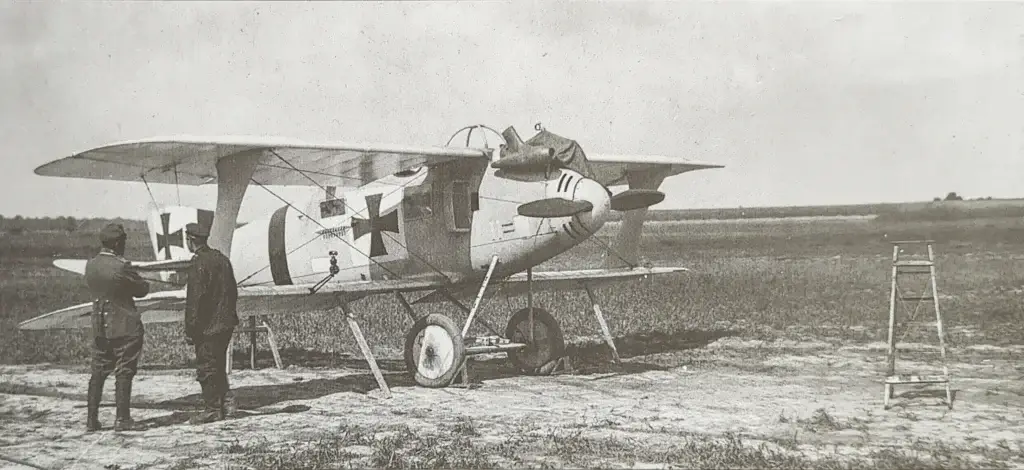
Roland C.II - Walfisch, von Roland (LFG)
Hauptrolle: Aufklärung
Motor: 1 × Mercedes D.III 6-Zylinder wassergekühlter Reihenkolbenmotor, 120 kW (160 PS)
Rüstung: 1x 7,92 mm (0,312 Zoll) Parabellum MG14 Maschinengewehr auf einer Ringhalterung im hinteren Cockpit, + 1x nach vorne feuerndes synchronisiertes 7,92 mm (0,312 Zoll) Maschinengewehr 08 „Spandau“ Maschinengewehr
1x 7,92 mm (0,312 Zoll) Parabellum MG14 Maschinengewehr auf einer Ringhalterung im hinteren Cockpit, + 1x nach vorne feuerndes synchronisiertes 7,92 mm (0,312 Zoll) Maschinengewehr 08 „Spandau“ Maschinengewehr
The C.II entered service in the spring of 1916. Operationally, handling was reported as difficult but performance was relatively good. Due to the crew positions with eyes above the upper wing, upward visibility was excellent, but downward visibility was poor. It was also used in a fighter escort role and had a crew of two, pilot and observer/gunner.
Because of its speed, when it was first introduced, few enemy aircraft could catch it level flight. A notable exception was the Nieuport 17 C.1, which was introduced at almost the same time, and which was several miles per hour faster. Because of the lack of downward visibility, it was best attacked by diving below and coming up at it.[2]
Albert Ball, whose first victim was a C.II, said in the latter half of 1916 that it was „the best German machine now“.
(source: wikipedia)
Spanne: 10.3 m (33 ft 10 in)
Länge: 7.7 m (25 ft 3 in)
Höhe: 2.9 m (9 ft 6 in)
Flügelfläche: 26 m2 (280 sq ft)
Leergewicht: 764 kg (1,684 lb)
Max. Gewicht: 1,284 kg (2,831 lb)
Reisegeschwindigkeit:
Max. Geschwindigkeit: 165 km/h (103 mph)
Decke: 4000 m (13000 ft)
Ausdauer: 4-5 hours dependent on fuel load
Steigrate: 2000 m (6600 ft) in 12 minutes
